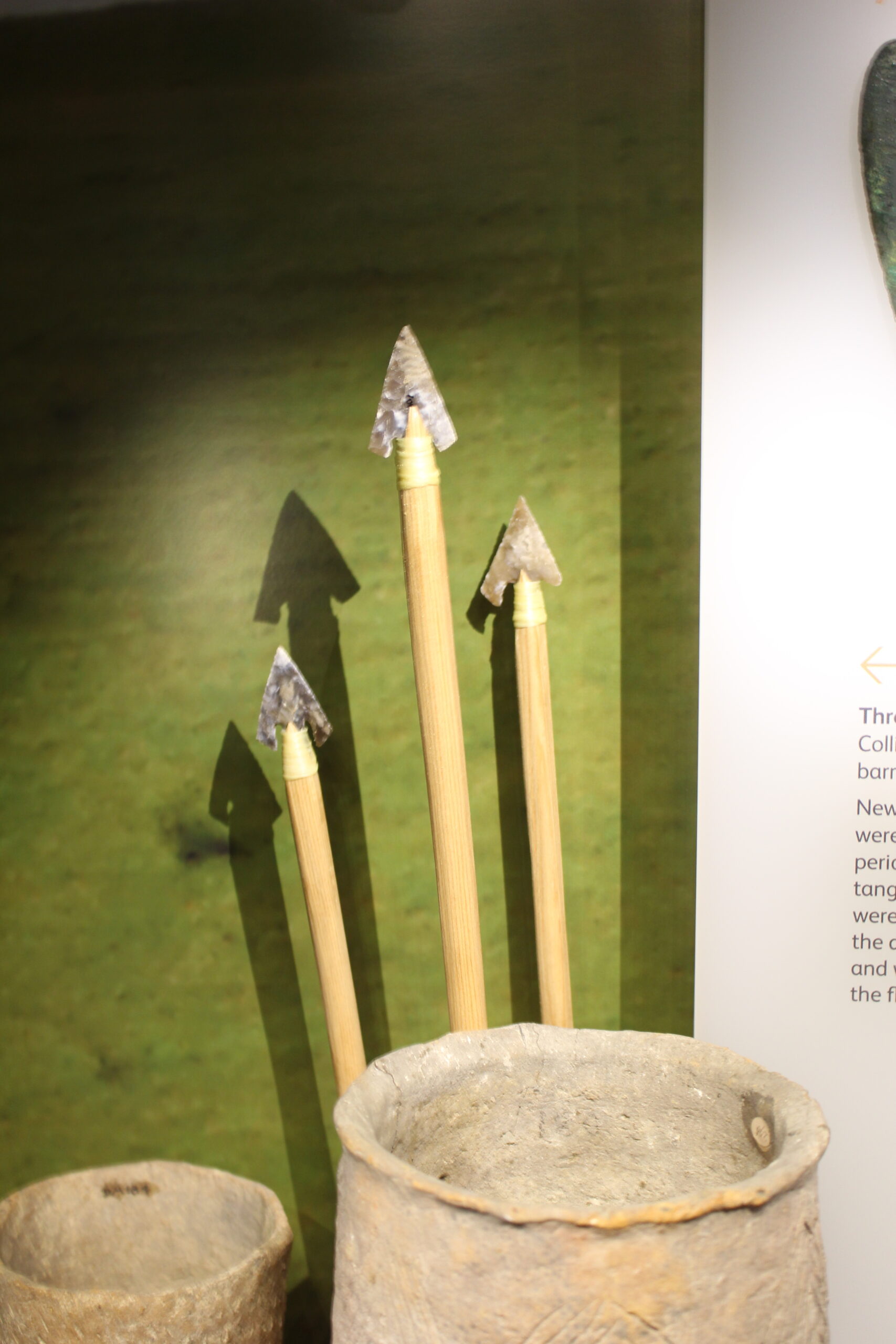Archery was important in the earliest part of the Bronze Age. Many of the barrows in the Stonehenge and Avebury World Heritage Site were built to mark the graves of men who were laid out in a crouched position with a Beaker at their feet and with one or more arrowheads. Sometimes they have a rectangular stone archer’s bracer on the inside of the left wrist. The bracer prevents the bow string from hitting the sensitive skin on the inside of the forearm. Usually no trace remains of the bow itself, which has long since rotted away.
These barbed and tanged arrowheads were carefully designed. Once the point had pierced the flesh, the barbs meant that the arrowhead would not fall out, meaning that if the arrow did not succeed in killing an animal outright, then it might die from the loss of blood. The tang was used to secure the arrowhead onto a slot on the wooden shaft.
Making this type of arrowhead required highly skilled flint-knapping techniques and some are so carefully made that it appears that they were made for display and not to be used.
Collingbourne Kingston G19
STHEAD.105-107


